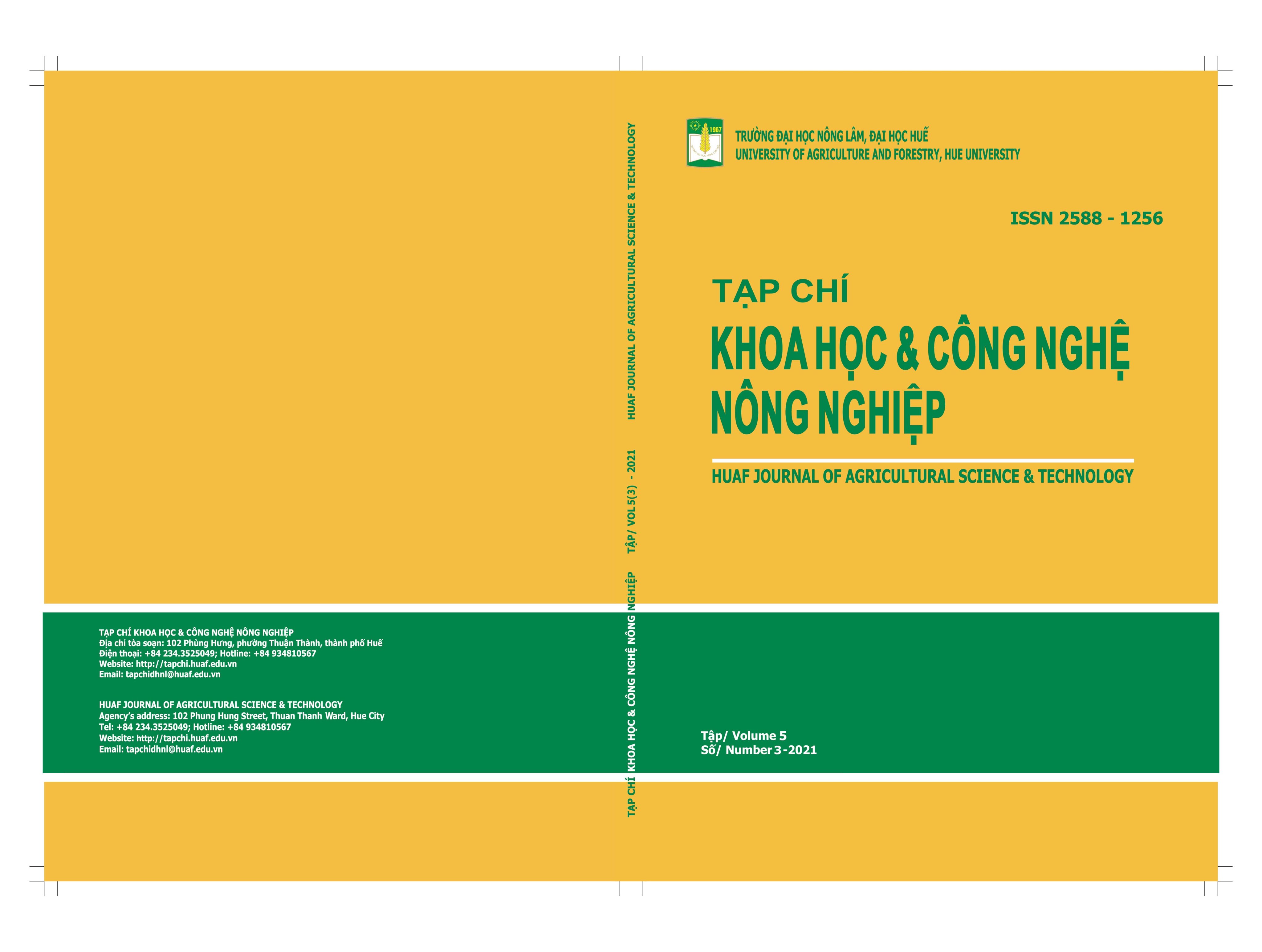##plugins.themes.huaf_theme.article.main##
Tóm tắt
Vi-rút gây bệnh đốm trắng (WSSV) là tác nhân lây nhiễm và gây tử vong hàng loạt trên tôm nuôi nước lợ. Nghề nuôi tôm hiện nay thường sử dụng hóa chất và kháng sinh để điều trị và kiểm soát nhiều loại bệnh trong đó có bệnh đốm trắng, việc này gây nhiều trở ngại cho xuất khẩu và tiêu dùng. Có rất nhiều nghiên cứu đã cho thấy tác dụng của nhiều loại thảo dược giúp phòng trị bệnh đốm trắng trên tôm. Trong nghiên cứu này, 15 loại cao chiết thảo dược đã được đánh giá độ độc tính và khảo sát in vitro khả năng kháng WSSV trên mô hình tôm thẻ chân trắng bằng phương pháp tiêm. Kết quả khảo sát độc tính cho thấy, hầu hết các cao chiết là an toàn khi tiêm vào tôm ở nồng độ 0,25 mg/mL, trong đó 5 loại thể hiện độc tính cao, 4 loại thể hiện độc tính trung bình và 6 loại an toàn với tôm. Kết quả đánh giá in vitro cho thấy đưng, dà vôi, ổi, mấm trắng, cỏ mực, đước, cốc trắng và diệp hạ châu có hoạt tính kháng WSSV tốt nhất ở nồng độ khảo sát 0,0025 mg/mL. Những kết quả này tạo tiền đề cho các khảo sát in vivo khả năng kháng WSSV của 8 loại cao chiết thảo dược nhằm tìm ra các loại cây thảo dược tiềm năng trong phòng trị bệnh đốm trắng trên tôm.
ABSTRACT
White Spot Syndrome Virus (WSSV) is a highly infectious agent and causes mass mortality in farmed shrimp. In shrimp farming nowadays, farmers often use chemicals and antibiotics to treat and control many diseases, including white spot disease, thus resulting in many obstacles for shrimp export and consumption. Many studies have shown the effects of herbs on preventing white spot disease. In this study, 15 types of herbal extracts were evaluated for their toxicity and the in vitro resistance to WSSV in white leg shrimp injection models. The results of the toxicity showed that all the herbal extracts were safe when being injected into shrimp at a concentration of 0.25 mg/mL. Five of the herbs were highly toxic, four had medium toxicity, and six were safe for shrimp. The in vitro WSSV resistance testing showed that there were eight herbal extracts (Rhizophora mucronata, Ceriops tagal, Psidium guajava, Avicennia marina, Eclipta prostrata, Lumnitzera racemosa, Phyllanthus urinaria and Rhizophora apiculata) having the highest activity against WSSV at the concentration of 0.0025 mg/mL. These initial results suggest the in vivo investigations on the resistance to WSSV of these eight herbal extracts to find potential herbal plants for aquaculture use, instead of antibiotics, in the prevention and treatment of white spot disease in shrimp.
